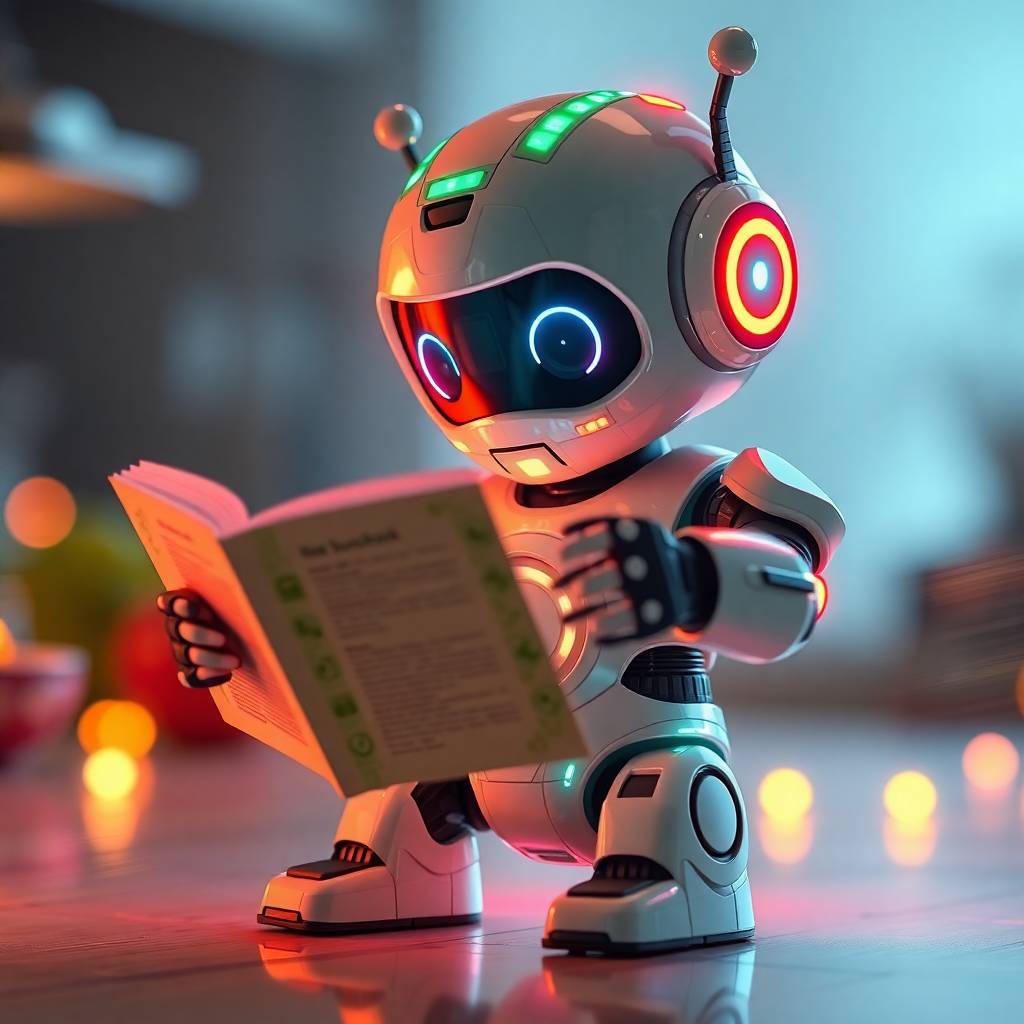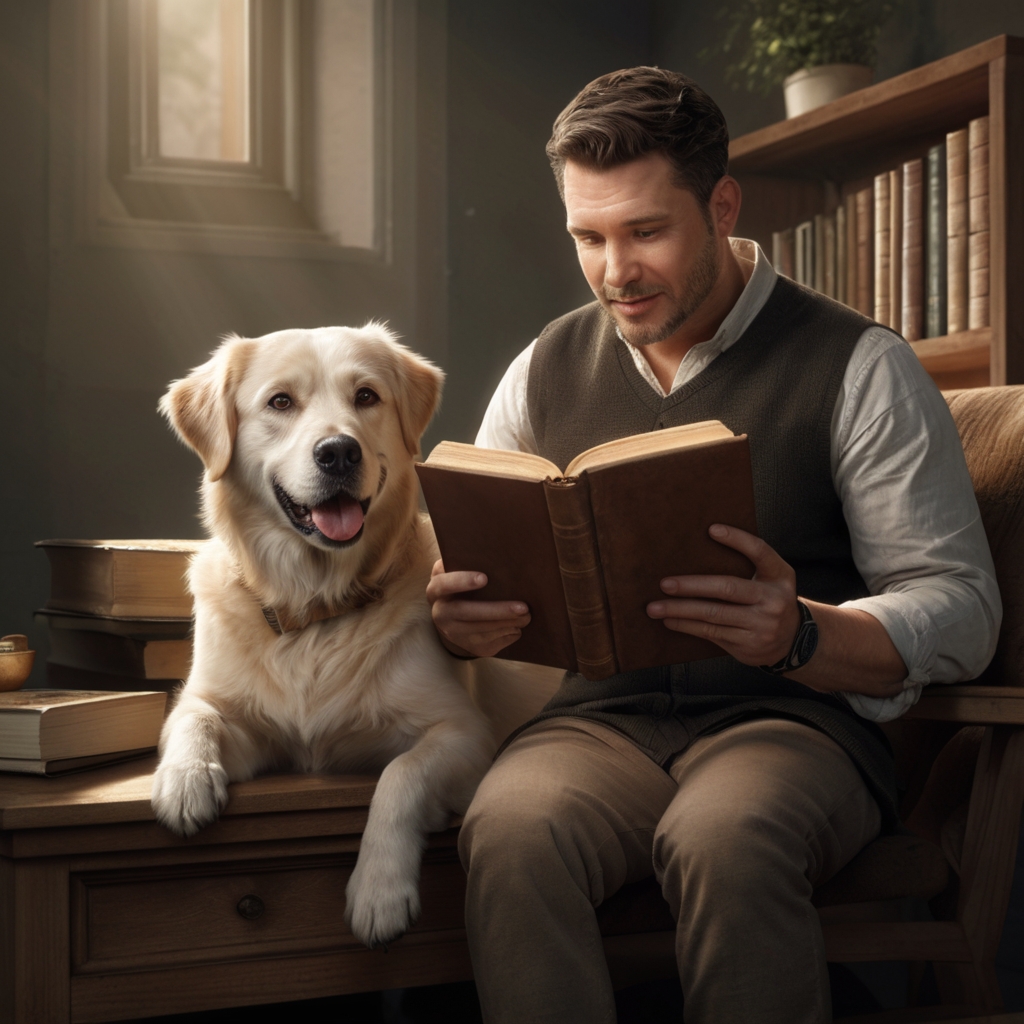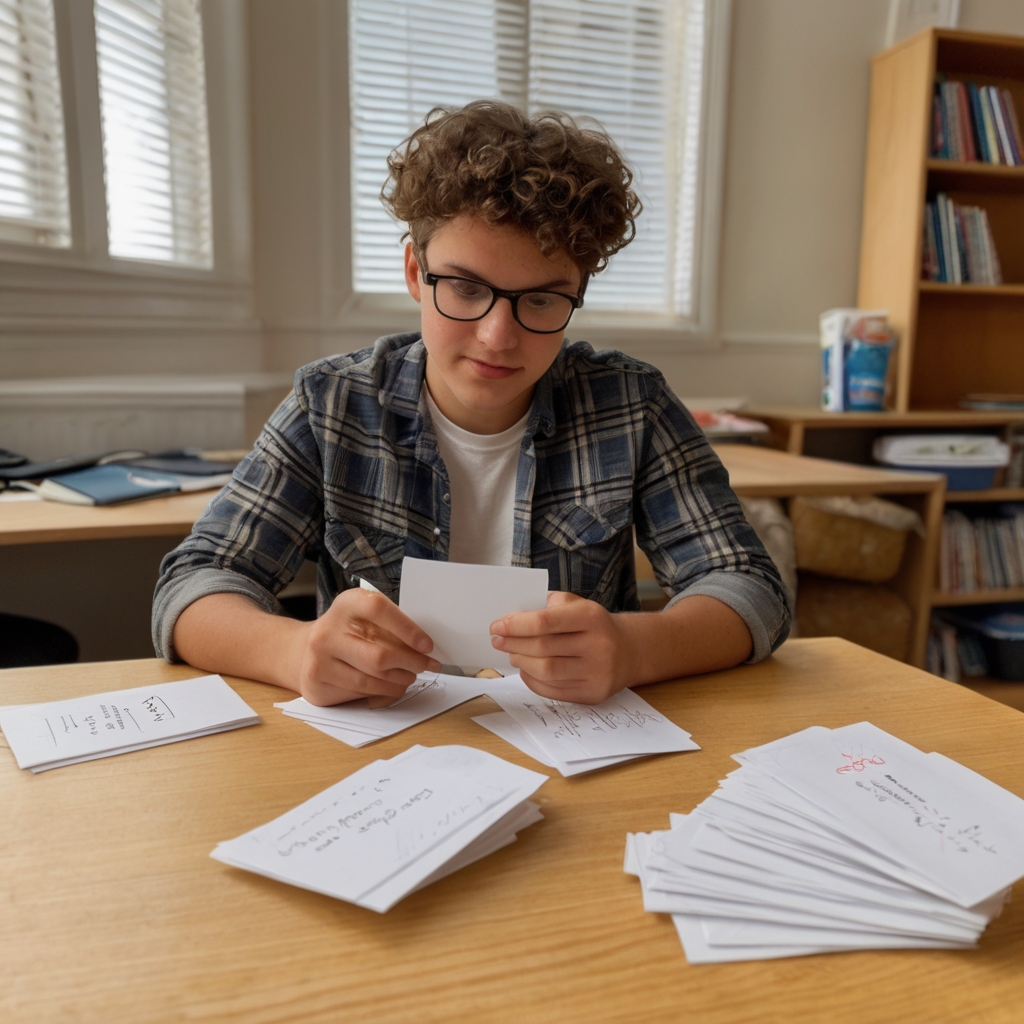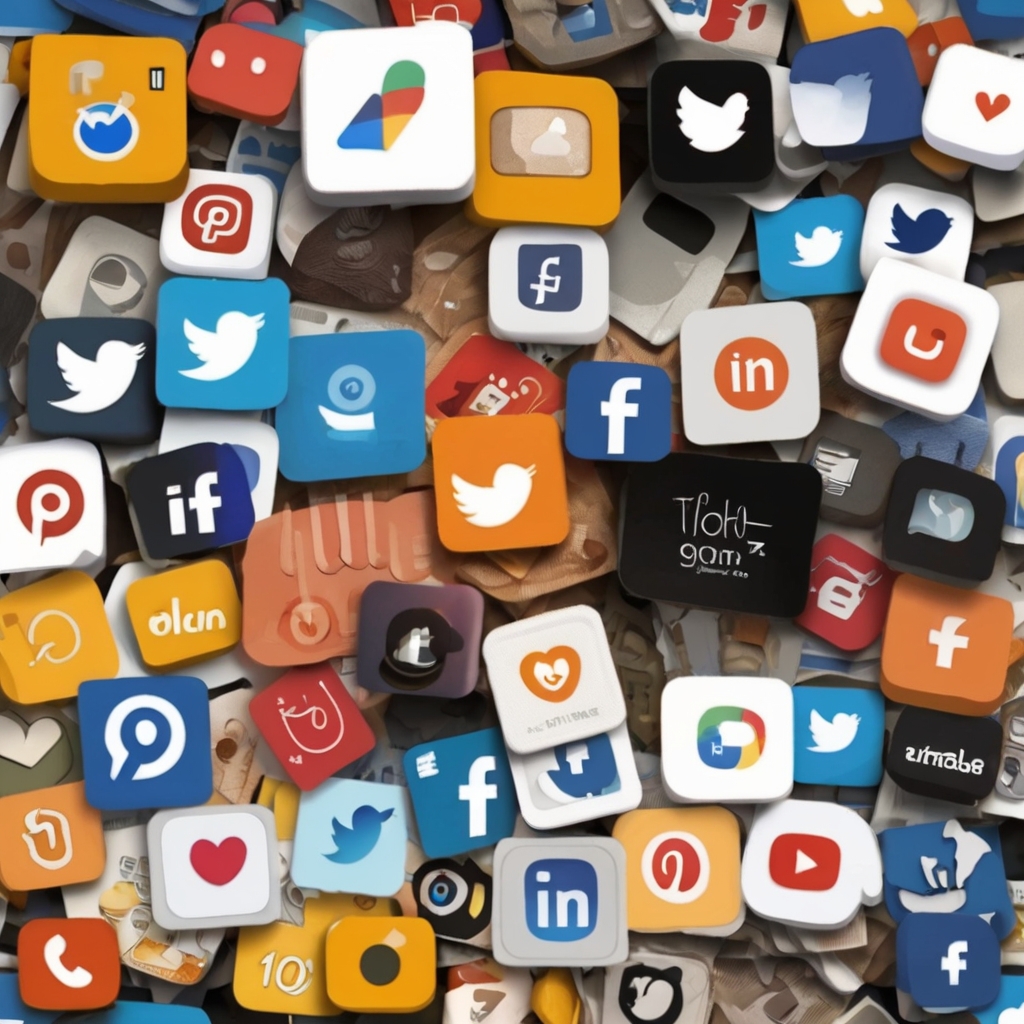- Home
- What is ChatGPT?
- What is ChatGPT Used For?
What Is ChatGPT Used For?
Surprisingly Easy Things You Can Do With It Today
Let’s be real: you’ve probably heard the term ChatGPT tossed around like it’s some kind of futuristic magic word—usually followed by people saying things like “robots are taking over” or “I used it to write a breakup text in Shakespearean English.”
So… what is ChatGPT and what is ChatGPT used for? More importantly, what can it do for you, a perfectly normal human who may or may not feel slightly panicked about anything with the word "AI" in it?
Breathe easy. This is your no-jargon, no-judgment guide to what ChatGPT is and why people are kinda obsessed with it (including me!).
What Is ChatGPT?

At its core, ChatGPT is an AI chatbot—a super fancy kind of computer program that can understand what you type and respond with words that make actual sense (most of the time). It’s kind of like texting someone who has read everything on the internet, never sleeps, and has shockingly decent people skills.
It was created by a company called OpenAI. They trained this chatbot using giant piles of text—books, articles, websites, all that good stuff—so it could learn how to respond in a natural, human-ish way.
Now before you start picturing a talking robot arm with glowing eyes: nope. ChatGPT isn’t a physical thing. It’s a web-based tool you can access from your phone or computer. Just log in, type something like “Can you explain taxes like I’m a confused goldfish?” and it’ll do its best to help.
But How Does It Work? (In Non-Nerdy Terms)
Okay, imagine you’re at a party. You ask someone, “What’s the best pizza topping?” and they respond, “Pineapple is lit.” That person (if you’re still friends) is doing what ChatGPT does: taking your question, processing it, and giving you a response based on everything they’ve heard before.
ChatGPT works a bit like that, except instead of one friend, it’s like talking to an entire library of brainy people who don’t interrupt. It looks at the words you typed, makes some predictions based on patterns it’s learned, and responds like a ridiculously fast, very polite internet genie.
It doesn’t actually know things. It doesn’t think or have feelings (even though it sometimes sounds suspiciously like your overly enthusiastic coworker). It’s just really good at guessing what words should come next in a sentence based on its training.
No soul, no secret agenda, no plans to replace you at Thanksgiving dinner. Promise.
So Why Is Everyone Using It? AND What is ChatGPT Used For?

Great question. ChatGPT is kind of like that one friend who’s good at everything:
- Need help writing an awkward email? It’s on it.
- Want a meal plan that avoids dairy, gluten, and effort? Easy.
- Trying to explain quantum physics to your 10-year-old (or your dog)? Totally doable.
- Stuck on a paper due in 3 hours? It's got you!
It’s being used by students, parents, small business owners, bloggers, marketers, teachers, you name it. Some folks even use it for fun—like making jokes, writing fake Tinder bios, or having it pretend to be a medieval knight giving modern-day life advice. (Don’t knock it till you try it.)
Basically: ChatGPT is a Swiss Army knife for your brain. It won’t replace your creativity or your judgment, but it can definitely save you time, give you ideas, and help you sound like you’ve got it together—even if you’re still in pajamas at 2 p.m.
But Real Talk—Is It Going to Take Over the World?
Okay, let’s clear the air: No, ChatGPT isn’t here to steal your job, your identity, or your snack stash.
Yes, it’s powerful. Yes, it can do a lot of things. But it’s not perfect—and it needs you to guide it. It doesn’t know current events, can make stuff up, and it definitely can’t handle sarcasm like your best friend can.
It’s not a replacement for humans—it’s a tool made by humans to help other humans do cool stuff faster (and sometimes with fewer typos).
So if you’ve been putting off learning about ChatGPT because it sounded too techy or intimidating, I get it. I was right there with you. But trust me: once you try it, you’ll wonder how you ever wrote a cover letter or planned a birthday party without it.
TL;DR – ChatGPT in One Friendly Sentence:
It’s a super-smart chatbot that can help you write, learn, plan, explain, and create things—without making you feel like you need to be a tech wizard.
Everyday Life Uses (That Make You Feel Like a Productivity Ninja)
Let’s face it—being an adult is kind of like juggling flaming swords while trying to remember if you took the chicken out of the freezer. Luckily, ChatGPT is like your personal assistant who doesn’t need coffee breaks, and it can help you stay on top of life without breaking a sweat.
Here’s how people (yes, even normal non-techy humans like us) are using ChatGPT to actually get stuff done—and maybe feel like a productivity wizard while doing it:
Writing Emails, Texts, or Polite Ways to Say “No”
We’ve all stared at a screen for way too long, trying to find a way to say “no” without sounding like a jerk—or how to phrase an email that doesn’t scream “I have no idea what I’m doing.”
Enter ChatGPT.
Whether it’s a message to your boss, a thank-you note to Aunt Brenda, or a “no thanks” to your neighbor’s pyramid scheme invitation, ChatGPT can help you write it clearly, kindly, and professionally. Bonus: it’s great at tone matching. Want it friendly? Direct? Passive-aggressive but still classy? You got it.
🟢 Example prompt:
“Write a polite text to decline a dinner invite because I’m overwhelmed with work but still want to stay friends.”
Planning Trips or Meals (Without Losing Your Mind)
 Tourist standing in front of Eiffel Tower by Leonardo AI
Tourist standing in front of Eiffel Tower by Leonardo AIPlanning a weekend getaway or trying to figure out what to eat for the next seven days can feel like solving a Rubik’s Cube with your eyes closed. But not anymore.
ChatGPT can help you:
- Plan a full vacation itinerary (with budget tips!)
- Find local attractions or hidden gems
- Create meal plans that fit your diet, taste, and how much time you have to cook!
- Even generate grocery lists based on what you want to cook
- It’s like having a travel agent and nutritionist in your pocket—minus the hefty bill.
🟢 Example prompt:
“Plan a 3-day trip to Asheville, NC with hiking, budget food spots, and chill vibes.”
Creating To-Do Lists, Shopping Lists, or Daily Schedules
If your brain feels like a browser with 47 tabs open—welcome to the club.
ChatGPT is amazing at turning chaos into clarity.
You can use it to:
- Break big goals into manageable steps
- Build a daily schedule around your routines
- Create smart grocery lists (based on meal plans or your pantry items)
- Even remind you to drink water and stretch (because self-care, duh)
It’s way more fun than scribbling half-legible notes on a sticky note that ends up in your sock drawer.
🟢 Example prompt:
“Make a daily schedule for a college student who has classes, a part-time job, and wants time to exercise and relax.”
Budgeting Help or Explaining “Adulting” Stuff (Like Insurance or Taxes)
You know those things that make you want to cry a little? Like figuring out what a deductible is, or why your car insurance went up for no reason?
Yeah, ChatGPT’s surprisingly helpful with that too.
It can explain financial terms like you're 12 (or 5—we don’t judge), help you make a basic monthly budget, or walk you through how taxes work in a way that doesn’t make you instantly give up and scroll TikTok.
🟢 Example prompt:
“Explain health insurance deductibles like I’ve never heard of one before.”
or
“Create a monthly budget for someone making $2,500/month who wants to save $400.”
🎓 For School & Learning (Goodbye, Essay Panic)
Let’s be honest—school can feel like a full-time job that doesn’t pay (unless you count emotional growth and debt). Between research papers, finals, group projects, and trying to understand what your professor meant by “just expand your argument,” it’s a lot.
That’s where ChatGPT swoops in like a caffeinated tutor who works 24/7, never rolls their eyes, and doesn’t judge you for starting your assignment the night before it's due.
Here’s how students are using ChatGPT to learn smarter—not harder:
Summarizing Articles or Textbook Chapters (A.K.A. Goodbye, Wall of Text)
Ever opened a reading assignment and felt personally attacked by how long it was? You’re not alone.
Paste a chunk of text into ChatGPT and ask it to summarize the key points in a way that actually makes sense. Want bullet points? A paragraph? A TL;DR version in meme form? It’s got you.
🟢 Example prompt:
“Summarize this article in 5 bullet points, like you’re explaining it to a college freshman.”
You can even ask it to focus on a specific section or theme if you need help prepping for a discussion or writing a response.
Explaining Tough Concepts in Plain English
Need someone to explain photosynthesis without sounding like a textbook from 1998? Or break down the economy without turning into an episode of Planet Money?
ChatGPT can simplify complex ideas and explain them in everyday language. You can even ask it to use analogies (trust me, it’s weirdly good at food metaphors).
🟢 Example prompt:
“Explain the concept of inflation using pizza.”
or
“Help me understand the difference between mitosis and meiosis like I’m in 8th grade.”
Perfect for when you're deep into a topic and your brain is quietly screaming.
Brainstorming Paper Topics or Project Ideas
Writer’s block is real—especially when you’re trying to come up with a term paper idea that isn’t completely boring or overdone.
ChatGPT can suggest:
- Research paper angles
- Presentation topics
- Creative project ideas
- Even thesis statements or outlines (once you have a topic)
It’s like having a brainstorming partner who never says, “I dunno, what do you wanna do?”
🟢 Example prompt:
“Give me 10 creative research paper ideas for a psychology class on human behavior.”
Practicing for Exams or Generating Flashcards
 Student studying with flash cards by Leonardo AI
Student studying with flash cards by Leonardo AIFlashcards are great... if you can stay awake long enough to make them.
Let ChatGPT take care of the boring part. Just type in a topic and ask it to create Q&A-style flashcards, multiple-choice quizzes, or definitions for key terms.
It’s also helpful for:
- Practicing test questions
- Reviewing definitions and terms
- Creating mock exams or practice problems
🟢 Example prompt:
“Create 10 flashcards for major events in the Civil Rights Movement.”
or
“Make a short quiz on the functions of the nervous system.”
⚠️ Important Note: Use It to Learn—Not Cheat
Look, we have to say this: ChatGPT is here to help you learn, not replace you.
Using it to understand something? Awesome.
Getting help brainstorming or reviewing concepts? Go for it.
Copy-pasting an entire essay it wrote and turning it in as your own? BIG nope.
Not only is that unethical, but most schools (and AI detectors) are catching on fast. Plus, you’ll miss the chance to actually learn something cool. And you are, in fact, smart enough to do that.
For Work & Business (Your New Secret Weapon)
Let’s be honest—most of us didn’t dream of growing up to spend our adult lives staring at spreadsheets or rewriting the same email three times to make it sound “friendly but assertive.” Whether you’re working from home, running a side hustle, or juggling a 9-to-5 that eats your soul a little, ChatGPT can make your work life a lot easier—and maybe even a little more fun.
Think of it as your overachieving intern who never takes lunch breaks and doesn’t mind if you’re still in pajamas.
Here’s how people are using ChatGPT to absolutely crush it at work without breaking a sweat:
Writing Professional Emails or Reports (a.k.a. Saving You From “Per My Last Email…” Fatigue)
You know that moment when you're staring at a blank screen, wondering how to say "This meeting could’ve been an email" in a professional way? Yeah, ChatGPT gets it.
Use it to:
- Draft polished emails that sound human and not robotic
- Rephrase something to make it more formal, casual, or just nicer
- Write client-facing reports, summaries, or updates without the mental drain
🟢 Example prompt:
“Write a follow-up email to a client who hasn’t responded in a week, keeping it polite but nudging them for a reply.”
Brainstorming Marketing Ideas (Even If You Feel Brain-Fried)
 social media icons by Leonardo AI
social media icons by Leonardo AIStuck in a creative rut? ChatGPT is like the colleague who always has ideas at the Monday meeting—but never steals your stapler.
You can use it to brainstorm:
- Catchy headlines or slogans
- Campaign concepts for social media
- Product descriptions that don’t sound boring
- Customer outreach ideas (email subject lines, promotions, etc.)
🟢 Example prompt:
“Give me 10 marketing ideas for launching a new eco-friendly water bottle on Instagram.”
Creating Content for Blogs, Social Media, or Newsletters
You don’t have to be a writer—or hire one—to publish content that connects.
ChatGPT can:
- Write blog posts, outlines, or rough drafts for you to polish up
- Generate social media captions in different tones (funny, serious, promotional, etc.)
- Create newsletter intros, blurbs, and call-to-actions that sound human and engaging
- Even reword long content into bite-sized, scroll-stopping chunks
🟢 Example prompt:
“Write a friendly LinkedIn post announcing our new team member and why we’re excited to have her join.”
Bonus tip: Ask it to write multiple versions of the same content so you can choose the best one—or mix and match.
Basic Code Help or Tech Troubleshooting (Because IT Is Always Swamped)
No, ChatGPT won’t replace your developer—but it can be a great first stop when:
- You need a quick code snippet (HTML, Python, JavaScript, etc.)
- You want help figuring out what an error message means
- You’re trying to automate something in Excel or Google Sheets
- You need simple instructions on how to use a tool or feature (looking at you, pivot tables)
🟢 Example prompt:
“Write a formula in Google Sheets that highlights duplicate values in a column.”
It won’t magically turn you into a programmer, but it will save you an embarrassing support ticket or two.
Creative & Fun Stuff (This Is Where It Gets Weird—in a Good Way)
Alright, so you’ve seen how ChatGPT can write emails, plan your vacation, and maybe save your academic career. But now it’s time to explore the real magic: the fun, weird, and totally unnecessary-but-hilarious things it can do.
Because sometimes, you just want your AI to act like a llama with relationship issues. And that’s valid.
Here’s how people are using ChatGPT to unlock their creativity—or just giggle until they spill coffee on their keyboard:
Writing Poems, Jokes, or Short Stories (Yes, Even Haikus About Spaghetti)
Feeling poetic? Out of dad jokes? In the mood for a bedtime story where the villain is a jealous burrito?
ChatGPT can generate:
- Poems in any style (haikus, sonnets, limericks, weirdly emotional free verse)
- Jokes ranging from clever to groan-worthy
- Short stories based on anything—you + your pet + a zombie apocalypse? Done.
🟢 Example prompt:
“Write a bedtime story about a lonely toaster who wants to be a rockstar.”
You can even give it a genre, tone, or twist ending. It’s the storytelling partner you never knew you needed.
Inventing Recipes (Some Edible, Some… Let’s Call It Experimental)
 Cookies with lavendar and cheetos by Leonardo AI
Cookies with lavendar and cheetos by Leonardo AISure, ChatGPT can give you normal recipes. But it can also invent completely new ones based on vibes alone.
Want a cookie recipe that includes lavender and Cheetos? It’ll try. A medieval-style stew using whatever’s in your fridge right now? Let’s go.
You can also ask for:
- Fantasy recipes (like a hobbit breakfast or alien smoothies)
- Themed party menus
- Dishes inspired by books, movies, or video game worlds
🟢 Example prompt:
“Create a brunch menu inspired by characters from The Office.”
Use it to cook, laugh, or start a new TikTok series. (But maybe keep the fire extinguisher nearby.)
Acting Like a Pirate, Therapist, or Llama (Yes, Really)
One of the best parts about ChatGPT? It doesn’t just give you answers. It’ll pretend—like full-on roleplay mode. You can ask it to take on any persona, and it’ll stay in character like a dedicated improv actor with no shame.
Try these:
- “Act like a pirate giving life advice”
- “You’re a llama therapist. Help me with my confidence issues.”
- “Be an overdramatic Shakespearean villain arguing with my dog.”
There are zero practical benefits to this… but so much joy. It’s AI with the soul of a theater kid, and we love that for it.
Helping You Learn New Things (Without Feeling Dumb)
Learning something new as an adult is hard. Not because we’re not smart—but because we have the attention span of a houseplant, 42 tabs open, and a deep fear of being the only one who doesn’t get it.
Enter ChatGPT: your friendly, judgment-free learning buddy who won’t roll its eyes when you say, “Wait… can you explain that again, but like I’m five?”
Whether you're trying to finally understand what an NFT is (no shame), learn a new language, or master that hobby you abandoned in 2006, ChatGPT makes learning feel fun, stress-free, and—most importantly—possible.
Explain It Like I’m 5” (Yes, You Can Actually Say That)
You know when someone’s explaining something and you just keep nodding, hoping they don't ask follow-up questions? Yeah, ChatGPT won’t judge you for that .You can literally say:
- “Explain quantum mechanics like I’m 5.”
- “What does APR mean, in the simplest terms possible?”
- “Teach me how a car engine works using peanut butter as an analogy.”
And it’ll break it down into bite-sized info nuggets that actually make sense. It’s like having a super-patient teacher who doesn’t care how many times you need to ask “but why?”
🟢 Bonus move: Ask it to explain something three different ways so you really get it.
Translate Languages or Fix Grammar
Whether you’re learning Spanish, brushing up on your high school French, or trying not to embarrass yourself in a group chat with your bilingual coworker—ChatGPT has your back. You can use it to:
- Translate full paragraphs
- Break down sentence structure
- Correct your grammar (and tell you why it’s wrong)
- Help you sound more natural in any language—seriously, it even knows slang
🟢 Example prompt:
“Translate this sentence to French, and explain why each word is used that way.”It’s like having a personal language tutor who doesn’t charge by the hour or make you do oral exams.
Practice Conversations (From Bonjour to Job Interviews)
Want to practice small talk in Italian without scaring an actual Italian person? Or rehearse for a job interview so you don’t blank when they ask, “What’s your greatest weakness?”ChatGPT will roleplay any conversation with you—yes, even awkward ones.Try things like:
- “Pretend you’re a cashier at a bakery in Paris. Help me practice ordering in French.”
- “Be a hiring manager for a tech company and ask me interview questions.”
- “Help me practice polite small talk at a networking event.”
Whether it’s flirting in Spanish or talking to your boss like a professional human, ChatGPT is the safest space to mess up and try again.
⚠️ Real Talk: What ChatGPT Isn’t Great For
Okay, so by now you’ve probably seen how ChatGPT can do a little bit of everything—write stories, help with homework, plan your week, maybe even help you flirt a little better in DMs. But let’s get real for a second. As amazing as it is, ChatGPT is not a superhero.
It’s more like a super helpful intern with zero common sense, no awareness of the real world, and a tendency to make things up if it doesn’t know the answer. (Relatable, honestly.)
Here’s what you shouldn’t use ChatGPT for—and why it’s better to ask a human sometimes.
⚕️ 1. Giving Medical, Legal, or Financial Advice (AKA: Please Don’t Trust It With Life-Altering Decisions). You might be tempted to ask ChatGPT things like:
- “Do I have the flu or just allergies?”
- “How do I get out of a speeding ticket?”
- “Can I afford a house if I only eat ramen for a year?”
But here’s the deal: ChatGPT is not a licensed professional, and it doesn’t have access to your full story, your lab results, or your bank account (thank goodness). Any advice it gives in these areas is general, not personalized, and not legally or medically sound.
🛑 Why this matters:
ChatGPT can sound confident while being completely wrong. It doesn’t actually know what’s best for you. It’s not a doctor. Or a lawyer. Or a CPA. It’s a robot trained on text—and that’s it.
✔️ Better idea:
Use ChatGPT to understand complex terms in plain English, or to help prepare questions you can ask a real professional. But when it comes to your health, your legal status, or your money—talk to someone with a license and a pulse.
🕒 2. Knowing Real-Time Facts (It’s Not a Psychic… or Google) ChatGPT’s brain is like a massive library that hasn’t had any new books added in a while. Unless it has web browsing enabled it can’t see what’s happening right now.
🛑 Why this matters:
It might confidently tell you that Queen Elizabeth is still alive, that Pluto is still a planet, or that gas prices are $2.17. (Spoiler: They’re not.)
✔️ Better idea:
Use ChatGPT to learn how things work or to understand background context. But for anything happening in the present moment, you’re better off using Google, a news site, or your weather app.
🎨 3. Replacing Human Creativity (Not Yet, Anyway) Yes, ChatGPT can write poems. And stories. And fake movie scripts about time-traveling ducks. But is it going to write the next Great American Novel? …Not likely
.Here’s the thing: ChatGPT is amazing at mimicking creativity. It blends styles, borrows from patterns, and can produce fun, weird, or clever stuff. But it’s not creating from real human experience. It doesn’t know heartbreak. Or joy. Or what it's like to accidentally text your ex at 2 a.m.
🛑 Why this matters:
AI creativity lacks true originality. It’s remixing the internet—not inventing from scratch. You’ll often find its ideas a little generic or surface-level unless you give it very detailed, imaginative prompts.
✔️ Better idea: Use ChatGPT as a creative spark—a co-writer, a brainstorm buddy, or a rough-draft machine. But remember: you’re the creative genius here. The soul of the story, painting, or song? That still comes from you.
🔒 4. Handling Personal Info Safely (Seriously—Don’t Overshare) ChatGPT isn’t secretly watching you or stealing your data, but it’s still not the place to unload your full identity. Things you should never type into ChatGPT:
- Your full name, address, or phone number
- Your Social Security number (please, no)
- Passwords, bank info, or private account links
Deep family secrets or anything that would devastate you if it got leaked
🛑 Why this matters:
While OpenAI has protections in place, ChatGPT conversations can be stored and used for training purposes (unless you're using custom privacy settings). That means your data isn’t 100% private.
✔️ Better idea:
Keep it general. You can ask, “What should I write in a job application?” without including your home address. If you ever need to share sensitive info—don’t do it in a chatbot. Ever.
Wrap-Up: If You Can Type It, ChatGPT Can (Probably) Help
Alright, we’ve covered the what, the why, and even the weird when it comes to ChatGPT. If your brain is now buzzing with ideas and you’re wondering, “Okay, but do I actually need this in my life?” — here’s your final pep talk.
Let’s keep it simple: if you can type it, ChatGPT can (probably) help.
And that’s the magic.
Time to Get Started!
I know you are dying to give it a try! Let's do it! On this page, you'll find step by step directions for how to access ChatGPT and how to get started with your first prompt! I can't wait to hear about all the fun things you do with ChatGPT!